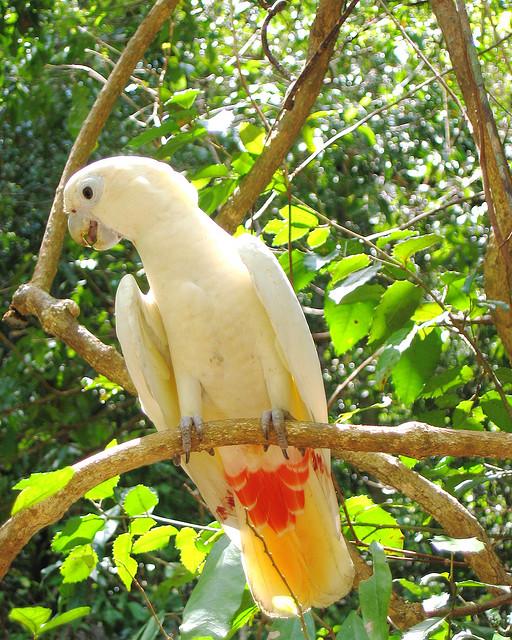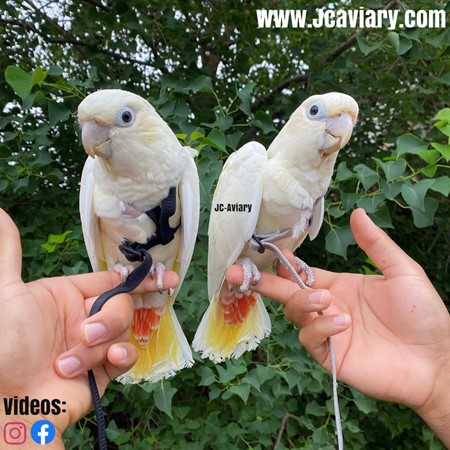
Das Verbreitungsgebiet dieser Art erreicht 19° nördliche Breite. Der Rotsteißkakadu (Cacatua haematuropygia) ist eine vom Aussterben bedrohte Papageienart, die auf nahezu allen philippinischen Inseln beheimatet ist.La cacatua de les Filipines (Cacatua haematuropygia) és una espècie d'ocell de la família dels cacatuids (Cacatuidae) que habita boscos i terres de conreu de les illes Filipines.In southern states outdoor caging must be protected from opossums to prevent exposure to the parasite Sarcocystis falcatula which can result in a fatal lung infection.
Red vented cockatoo full#
If housed outdoors cockatoos often call at night especially during a full moon. Red-vented cockatoos are not as noisy as the larger cockatoos however when breeding cockatoos, noise and proximity to neighbors must be considered. Aggressive behavior may occur in compatible breeding pairs. Clipping the wings of the male prior to the breeding season will help the female to escape in case the male becomes aggressive. Cage construction and management should take into consideration techniques to reduce mate aggression. Male cockatoos frequently become aggressive toward their mates. Most hand rearing formulas can be used successfully. Red-vented cockatoos are relatively easy to hand-rear. Chicks will usually fledge at approximately 8 to 10 weeks of age. Incubation period is approximately 24 to 26 days. Size should be approximately 12 inches by 12 inches by 36 inches or deeper. Grandfather style wooden boxes can be used and red-vents tend to like a deep, narrow nest. Clutch size is typically 2 to 3 eggs.ĭouble entrance nest boxes are often used to reduce the chance of the male trapping the female in the box. In North America red-vented cockatoos breed predominantly in the winter and spring. Red-vented cockatoos can be difficult to breed in captivity. Ideally the bird will have an outdoor cage as well to allow playtime in the fresh-air and sunlight. The cage should be as large as possible but must allow at least enough room to fully spread their wings. Locks or escape proof latches may be necessary on cages. Durable cage construction is not as critical as red-venteds are not such strong chewers. A suggested size is 4 feet wide by 4 feet tall by 6 feet long suspended 4 feet above the ground or floor. One inch by one inch by 12 or 14-gauge welded wire is a good choice for cage construction. Ideally the cage should provide room for flight. Red-vented cockatoos are very active and should be provided the largest cage that space and budget allows.

Vitamin supplements are not needed for birds that are eating a formulated diet. Try to ensure that the food that they eat is nutritious and avoid feeding large quantities of high fat seeds such as sunflower and safflower. Overfeeding leads to pickiness, selective feeding and wasteful throwing of food.Īdult and juvenile red-vented cockatoos are efficient in utilization of calories and are picky eaters. Feed approximately 1/4 cup of a formulated diet and 1/4 cup of fresh fruits and vegetables daily. The diet should be supplemented with fresh fruits and vegetables daily to add variety and psychological enrichment.

FeedingĬockatoos should be fed a formulated (pelleted or extruded) diet as a basis for good nutrition. They should always be provided with toys, blocks of wood or branches that they can chew. Red-vented cockatoos are inquisitive and love to chew objects in their surroundings but are not as destructive as other cockatoos. Breeding life span is not precisely known. Breeding age can be as young as 2 years but, due to difficulty in adaptation of first generation birds, few captive birds are being bred. Wild caught pairs may take years to adapt and become reliable breeders. Many succumb to disease or injury rather than living for their potential life span. Precise data on life span of the average red-vented cockatoo is poorly documented. Red-vented cockatoos can live up to 40 years. The underside of the flight feathers are yellow. The under-tail coverts are red and the beak is almost white. Red-vented cockatoos are small white cockatoos with a short white recumbent crest. They feed on seeds, nuts, fruits and berries. It is heavily dependent upon coastal mangrove but also found in lowland forests. The range is now limited to a few of the smaller islands including Palawan, which is their last stronghold. Red-vented cockatoos ( Cacatua haematuropygia) have become extremely rare and are considered the most endangered bird in the Phillippines other than the Phillippine eagle. Due to their critical conservation status, available birds should be utilized for breeding rather than pets. They are gentle, playful and very affectionate.

Red-vented cockatoos are active, high-energy birds.


 0 kommentar(er)
0 kommentar(er)
